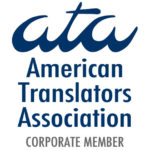The Real Academia Española (RAE) recently announced a number of proposed changes to spelling conventions, causing quite a stir throughout the Spanish-speaking world. Many academics and writers scoffed at the RAE’s plans to introduce these spelling reforms, which, according to some, were bound to create unnecessary confusion.
Following the academy’s recent meeting in Guadalajara, Mexico, linguists approved an 800-page document describing the various newly adopted reforms. The following proposed changes – some of the most hotly debated – were discarded by the RAE’s 22 academics:
»Writers may choose whether the word “sólo” as well as demonstrative pronouns such as “éste” or “ésa” carry an accent. Previously, the RAE had suggested that the accent be eliminated.
»Respecting the fact that the names of the letters “b,” “v,” “w,” and “y” vary among different Spanish-speaking countries, the RAE dismissed the suggestion of assigning just one name to these letters. For example, the name of the letter “b” will continue as “be alta,” “be larga,” or simply “be,” while the letter “y” will retain its historic designation as “i griega” alongside the newly admitted name “ye.”
The rest of the previously announced reforms remain in effect.




